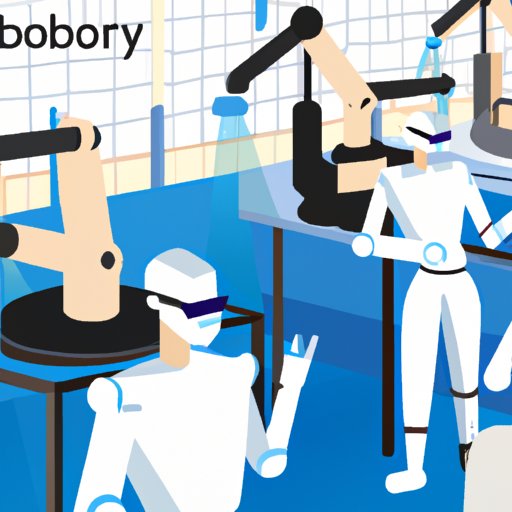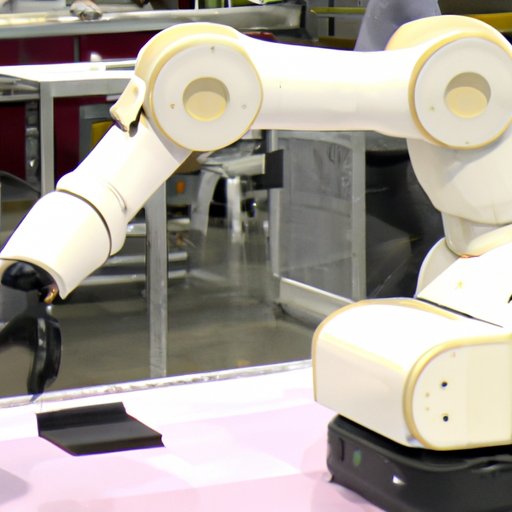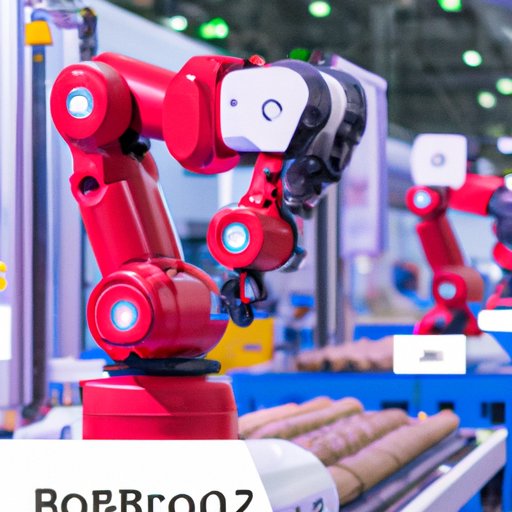Introduction
Collaborative robots, also known as “cobots”, are a type of robotic technology that is designed to work safely alongside humans in a shared workspace. This type of robot has become increasingly popular in recent years due to its ability to automate processes while still allowing for human interaction. This article will explore what collaborative robots are, the key components of a collaborative robot system, the benefits and challenges of using them, and how they are transforming the automation industry.

Exploring the Basics of Collaborative Robots: What You Need to Know
Collaborative robots are designed to be used in a variety of applications, from industrial manufacturing to medical research. They can be programmed to perform a range of tasks such as picking, sorting, and packing items, as well as assembling parts. The key components of a collaborative robot system include sensors, controllers, actuators, and end-effectors. Sensors allow the robot to detect changes in its environment and respond accordingly, while controllers enable the robot to interpret commands and execute tasks. Actuators provide movement capabilities, while end-effectors are the tools or devices used by the robot to interact with its environment.
The Benefits and Challenges of Collaborative Robots in Today’s Manufacturing Environment
Collaborative robots offer various advantages over traditional automation systems. They require less infrastructure and installation time, and they are highly flexible, meaning they can be quickly reprogrammed to perform different tasks. In addition, they are typically more affordable than traditional robots, making them an attractive option for businesses with limited budgets. However, there are also some challenges associated with using collaborative robots. For example, they may not be able to handle heavier loads, and they require close monitoring to ensure safety.
How Collaborative Robots are Transforming the Automation Industry
Collaborative robots are changing the way automation is being carried out in many industries. By providing improved efficiency, reduced costs, and enhanced safety, they are revolutionizing the way businesses operate. The improved efficiency of collaborative robots means that tasks that would have taken days or weeks to complete can now be completed in hours or even minutes. This saves time and money, which can then be reinvested into other areas of the business. Additionally, collaborative robots can help reduce costs associated with labor, training, and maintenance. Finally, their enhanced safety features mean that workers are protected from potential hazards and accidents.

The Impact of Collaborative Robots on Job Creation
Although there are concerns that collaborative robots could lead to job losses, they are actually creating more jobs in the automation and robotics industries. As businesses begin to adopt collaborative robots, there is an increased demand for skilled workers who can develop and maintain these systems. In addition, the reallocation of tasks from humans to robots means that workers can focus on more complex and creative roles, leading to higher job satisfaction. Finally, the emergence of new opportunities in robotics is creating a whole new set of career paths.

Advancing Safety with Collaborative Robots
Safety is a key concern when it comes to collaborative robots. To ensure that these robots are used safely, risk assessments must be conducted to identify any potential risks. Protective measures must then be put in place to mitigate these risks. This includes the implementation of safety protocols and the use of protective equipment. In addition, monitoring systems should be in place to monitor the performance of the robots and ensure that they are working safely and efficiently.
Real-World Use Cases for Collaborative Robots
Collaborative robots are being used in a range of industries, from automotive assembly to logistics and warehousing. They are also being used in electronics manufacturing, where they are used to assemble circuit boards and other components. In addition, collaborative robots are being used in medical research to assist with experiments and clinical trials. These robots are helping to make the manufacturing process faster, safer, and more efficient.
Conclusion
Collaborative robots are becoming increasingly popular in today’s manufacturing and automation industries. They offer various benefits, including improved efficiency, reduced costs, and enhanced safety. They also create new opportunities in robotics and require the reallocation of tasks from humans to robots. Although there are some challenges associated with using collaborative robots, their real-world use cases demonstrate their potential to revolutionize the automation industry.
(Note: Is this article not meeting your expectations? Do you have knowledge or insights to share? Unlock new opportunities and expand your reach by joining our authors team. Click Registration to join us and share your expertise with our readers.)
